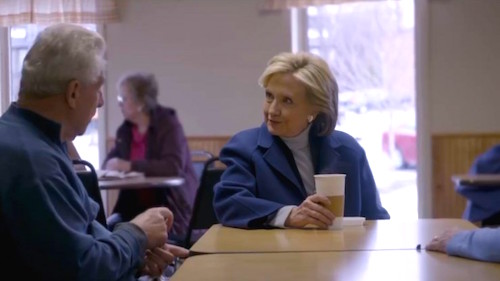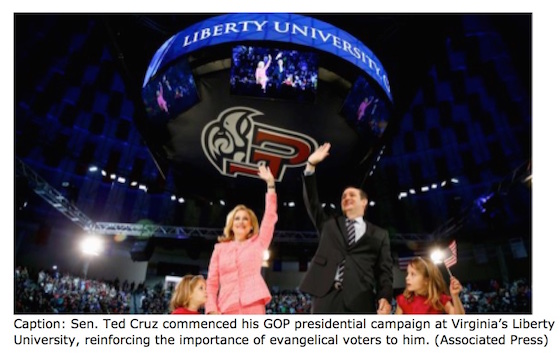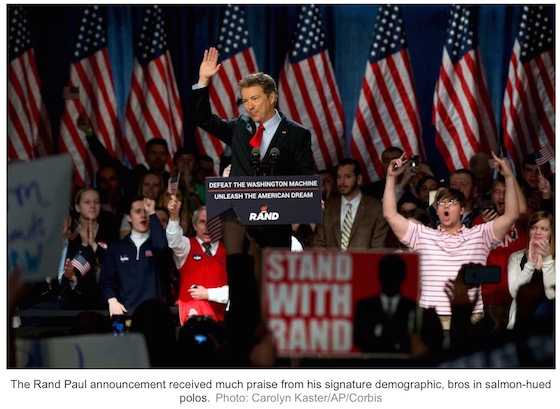Media-Visual Literacy and Presidential Politics
And they’re off! A phrase most often heard in horse racing. The race for U.S. President is not a horse race, of course, even though the media is often criticized for covering it as if it were one.
Recently, we’ve seen several candidates dive head first into the race for the Presidency. Perhaps you think it’s too early for a candidate to begin the race for November 2016, but the announced candidates don’t think so. And if the political saturation of the media has begun, that signals a need for an even greater focus on media literacy in our classrooms.
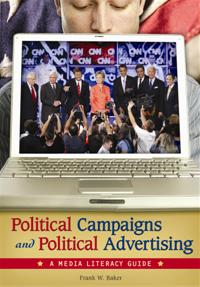
As a media educator, I want to help today’s media-saturated students realize the lengths that political consultants will go to get (and keep) our attention now and in the future. Here are some considerations as the 2015-2016 presidential campaign begins to heat up.
Announcements as political stagecraft
Three candidates (GOP senators Ted Cruz, Rand Paul and Marco Rubio) chose specific physical locations for their presidential announcements. Democrat Hillary Clinton elected to bypass the physical announcement entirely, taking her message to the voters via a YouTube video: one that appears to be a two-minute long campaign commercial.
The Washington Times reported recently that we can “expect other candidates to pick their own symbolic locations as the campaign enters the beginning of the scripted period, when what consultants and talking heads call ‘optics’ becomes paramount, and when, how and where a candidate speaks can be even more important than what is actually said.” The Times continues:
“Candidates will strategically select locations that articulate the themes of the campaign and reinforce the issues and arguments that will serve as their rationale for running,” says Daniel Schill, associate professor in the School of Communication Studies at James Madison University.
Schill, author of Stagecraft and Statecraft: Advance and Media Events in Political Communication, told the Times that “candidates usually kick off their candidacies in places that hold personal or symbolic meaning.” Schill calls such locations “sacred sites.”
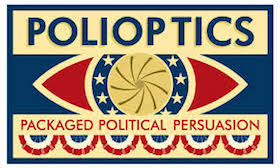
The creation, production and distribution of image to persuade audiences in one direction or another is happening all around us, from Washington to Beijing and every place in between. It is a fundamental driver of politics, entertainment, marketing and popular culture. It is ever-changing and endlessly fascinating, from the roots of influence through image to the technology-driven developments of today.
And, let’s not forget, it is the media (broadcast and social) that will be communicating these crafted messages and visuals to us, the potential voter, via tomorrow’s news. This is true whether candidates appear physically or virtually. (This US News story reports on the media response to the first wave of presidential candidate announcements.)
Politics, visual literacy, and learning standards
In my media literacy workshops, I make note that this new century is a decidedly more visual one. More people are working in the visual and design fields, whether that be packaging a pizza or packaging the next President. So, visual literacy—the ability to deconstruct, analyze, comprehend and question that image—is a critical skill in the 21st century. This fact is reinforced when we see that university professors like Daniel Schill are focusing their scholarship on political optics.
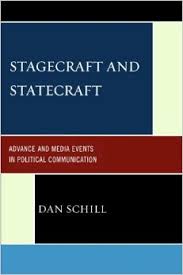
In a 2013 Position Statement on Technology, the National Council on the Social Studies made reference to the importance of teaching with and about political media: “Given social studies educators’ expertise with sourcing historical evidence, critically analyzing political messages, and drawing inferences from GIS data, they are well equipped to further students’ media literacy and related skills.”
Teaching students to analyze visual images in political settings
The first and perhaps most important feature of media literacy is representation. How are products — or in this case, candidates — being presented? In the political arena, consultants go to work deciding how to use colors, symbols, camera angles and music to appeal to the news consumer. After deciding on a setting, they will design the stage and all of the other trappings to take full advantage of the camera. Everything is pre-planned and staged.
Then comes the “reveal.” The candidate (and often his or her family members) emerge wearing smiles and brightly colored or accented clothes. From the moment a candidate walks onto the stage until they finish their speech and exit the location, viewers are experiencing a highly produced political show.
When working with students, we might take an example like the image below of Senator Ted Cruz and family on the day of his April 2015 announcement. With students I prefer to use images without captions and guide them through a close reading exercise which starts with the question: What do you see? But for our purposes, I am including the captions below as provided by the photojournalists working for the news organizations.
The following questions might be used to guide student thinking and understanding:
- What is the setting? Why do you think that location was chosen?
- What is prominent in the image? What is missing?
- Where is the camera positioned that took this image? Why do you think it has been placed there? What is shown and what is not?
- What color or colors, and symbols are visible?
- Is the candidate’s name, slogan or other message visible? If so, what is it?
Now let’s consider another image, from the New York Magazine website:
Senator Rand Paul (R-KY) used a Louisville, Kentucky hotel as the location of his announcement. Return to the previous questions and consider them as you look at the image of Senator Paul. Compare the Cruz and Paul images and have students look for both similarities and differences.
Teaching ideas
Now that these candidates are officially in the race, their commercials and other messages will be easily accessible for analysis via social media, on their websites, on YouTube, at Google Images and other sources.
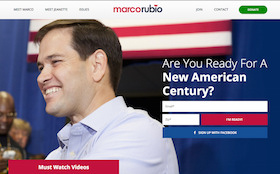
► Task your students with watching one or more of the candidates’ TV commercials and have them begin to notice how persuasive these messages can be. It will be important for students to recognize the techniques being used. (Can they understand how the type of music, for example, might provoke an emotional response for the audience?) For background on the persuasion techniques, take a look at the resources on my media and politics website. There, you will also find a downloadable worksheet for analyzing and deconstructing a candidate’s commercials.

► The lesson plans on The Living Room Candidate website are also worth considering as are the resources on this McDougal-Littell textbook website.
► Listen to an episode of Polioptics Radio. More than 150 episodes, featuring professional political consultants and journalists, are listed at the Polioptics website (see list in right margin). For example, Episode 9 features guests Howard Wolfson, a Hillary Clinton presidential campaign advisor in 2008, and Kevin Sullivan, former communications director for President George W. Bush.
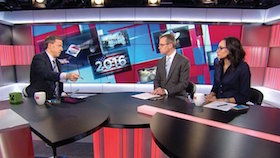
If students are more critical and possess the necessary media literacy skills, they will be better equipped to see through the spin and fluff that have become part of the American political landscape.
Media educator Frank W. Baker is the author of “Media Literacy in The K-12 Classroom (ISTE 2014) He also wrote “Political Campaigns & Political Advertising: A Media Literacy Guide” in 2008 and says the resources and background are as relevant today as they were then. He is the creator of The Media Literacy Clearinghouse website. He conducts workshops at schools, districts and conferences. Follow him on twitter @fbaker. He can also be reached at fbaker1346@aol.com


